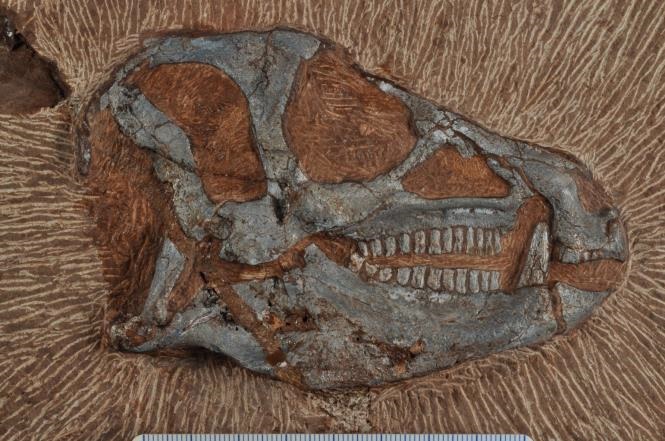Johannesburg – A remarkable dinosaur fossil discovery made by a South African palaeontologist in 2005 has finally revealed its secrets.The fossil, the most complete ever found of a species known as Heterodontosaurus tucki, was recently scanned at the European Synchrotron Radiation Facility (ESRF) in Grenoble, France.
The Evolutionary Studies Institute at the University of the Witwatersrand (Wits) in Johannesburg took the complete skeleton of the small dinosaur to the ESRF. The dinosaur is believed to have roamed the earth 200 million years ago.Billy de Klerk found the fossil in a stream bed on a farm near Grahamstown in the Eastern Cape.
The dinosaur was scanned between July 21 and July 26.
“Heterodontosaurus was a small, plant-eating animal with grinding teeth in the back of the jaw and big canines in the front,” the ESRF’s spokesperson Delphine Chenevier said in a statement.
De Klerk excavated the fossil from the stream bed and removed enough rock from the bones to identify the animal. The skeleton was, however, too small and delicate, and the rocks around it too hard to enable scientists to fully study the anatomy. The fossil was therefore sent to the ESRF, where it was X-rayed.
“That’s where the synchrotron comes in: the high-energy X-rays generated… will allow scientists to reconstruct the skeleton in incredible detail,” said Chenevier.
A team of scientists, led by Wits Prof Jonah Choiniere, with the ESRF’s palaeontologist Dr Vincent Fernandez, scanned the specimen with high-powered X-rays. They wanted to understand how Heterodontosaurus ate, moved, and breathed.
“We think the back teeth are used for grinding,” Chenevier said.
“Typically, in dinosaurs that have grinding dentition, they have a certain type of tooth replacement, that is: teeth grow inside the jaw and gradually replace those grinding teeth as they wear down. Lots of scientists have speculated about tooth replacement in Heterodontosaurus. Now this is the first time that we have a complete jaw and we can actually test some of those speculations.”
Choiniere said the scans revealed details of the bones forming the roof of the mouth.
“We can see the palate and the mid-line of the skull and those palate bones are really very fine, less than 1mm across. We’ve scanned this at such a good resolution that we can actually see the outlines of the palate bones very, very well.”
Source:news24.com
Key: WFS,World Fossil Society,Riffin T Sajeev,Russel T Sajeev



 July 28th, 2016
July 28th, 2016  Riffin
Riffin 

 Posted in
Posted in  Tags:
Tags: 